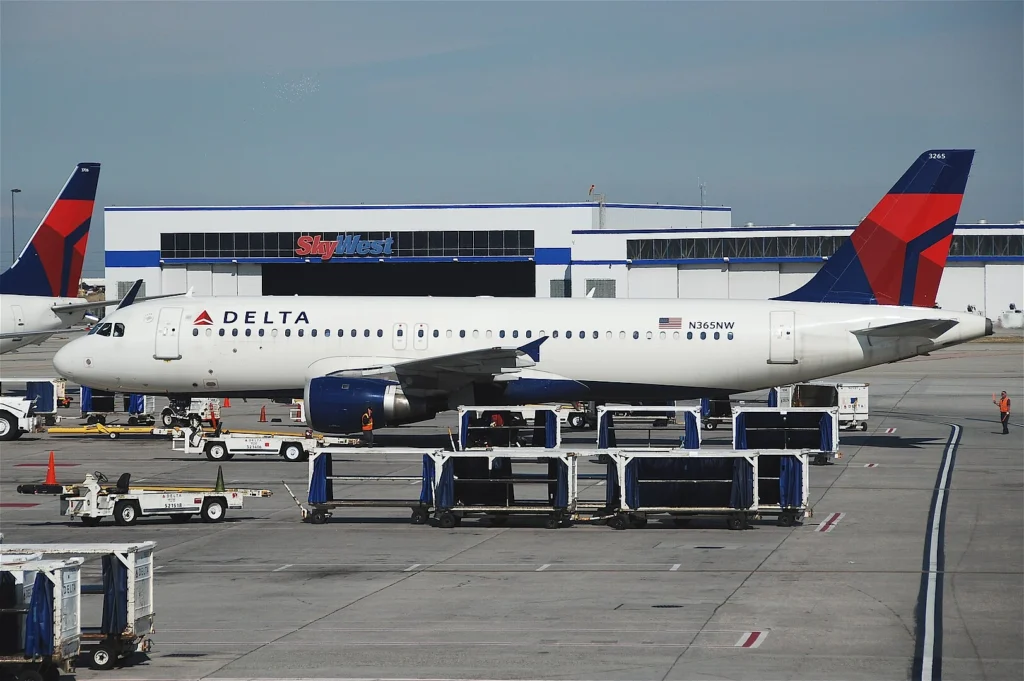Introduction
Mid-flight surprises, like unexpected diversions, can unsettle even experienced travelers—raising concerns over safety, comfort, and what’s happening behind the cockpit door.
This article breaks down the Delta Flight DL275 diverted LAX incident in clear terms—detailing what happened, why it happened, how Delta handled it, and what you, as a traveler, should know when flights veer off course.
Flight Overview: What Was DL275’s Original Route?
Delta Flight DL275 was scheduled to fly from Detroit Metropolitan Airport (DTW) to Tokyo Haneda Airport (HND) on May 27, 2025. Operated aboard an Airbus A350-900, it was part of Delta’s transpacific network and expected to complete a trip of over 7,000 miles in just over 13 hours.
What Triggered the Diversion to LAX?
The flight was diverted due to a technical malfunction in the engine’s anti-ice system—an essential component preventing ice accumulation mid-flight. Deviations in this system can compromise engine safety, especially in cold, remote airspace.
Why Did the Plane Land at LAX?
Los Angeles International Airport (LAX) was an ideal choice given its:
- Proximity relative to the flight path
- Specialized maintenance capabilities for the Airbus A350
- Access to experienced Rolls-Royce technicians
- Comprehensive infrastructure is needed to support emergency landings
Incident Timeline: Key Moments from Start to Emergency Landing
- DL275 embarked from Detroit as scheduled.
- Approximately five hours into the flight, the anti-ice fault appeared.
- Pilots coordinated with ground teams and ATC to decide on the diversion.
- The aircraft safely landed at LAX after rerouting.
- On-ground mechanics diagnosed and resolved the anti-ice issue.
The Passenger Experience and Delta’s Response
- The crew remained calm, informative, and transparent, helping passengers understand the situation.
- Emergency services stood ready at LAX, but no medical assistance was ultimately needed.
- Delta arranged accommodations, rebooking, and logistical support for passengers whose travel was disrupted.
Cost & Operational Impact
The diversion incurred estimated expenses between $2 million and $2.3 million, accounting for:
- Additional fuel and rerouting
- Maintenance and inspections
- Passenger care and accommodations
- Missed revenue from the Tokyo segment
The incident also triggered ripple effects across Delta’s Pacific operations over the next 72 hours.
How Often Do Diversions Like This Happen?
While diversions are rare, they do occur, averaging around 1 per 1,000 flights. The primary causes include mechanical issues, medical emergencies, severe weather, or air traffic disruptions.
What Travelers Can Learn from This
- Stay calm and attentive to crew communications
- Use airline apps for real-time updates
- Have essential items accessible (medication, phone, IDs)
- Airlines typically provide rebooking, hotels, or compensation as issues are resolved
Conclusion
Delta Flight DL275’s diversion to LAX underscores a fundamental principle of aviation: safety over schedule. The crew’s prompt and measured response illustrates how modern airlines, supported by advanced training and systems, handle the unexpected with professionalism and care. For passengers, this incident is a reminder to stay informed, prepared, and trusting of the safeguards built into air travel.

This author regularly contributes to Mannacote, focusing on practical, easy-to-understand articles across tech, health, business, lifestyle, and food. With a commitment to clarity and real-world relevance, their content is designed to inform, guide, and inspire readers at every stage of life.
Visit: https://mannacote.com.in/





